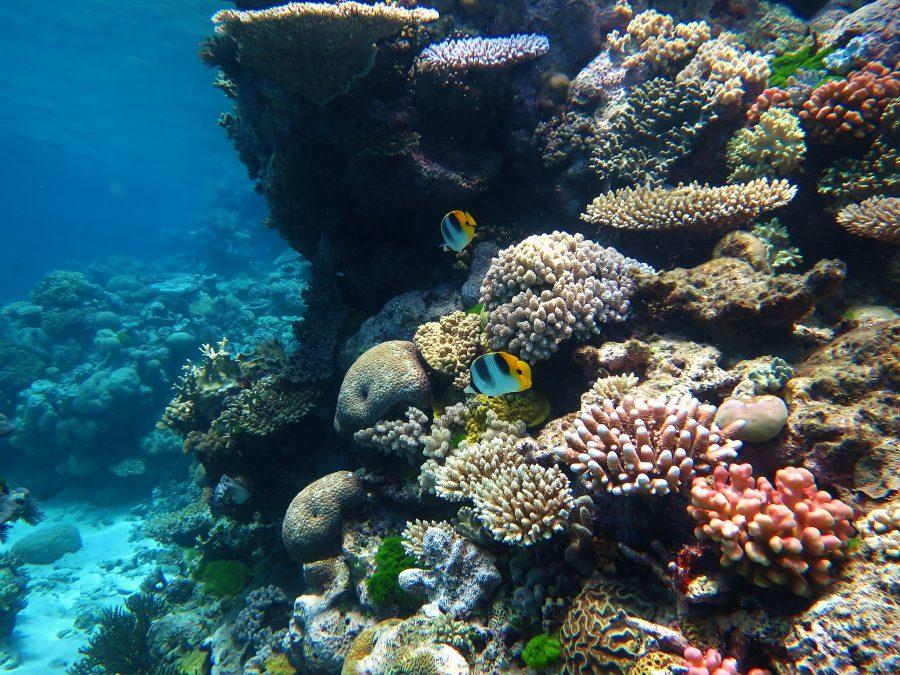There is so much to experience when visiting a new place. The history, the food, the architecture—the list never ending. If you find yourself wondering where your next adventure should take you, you should consider these places before they’re gone.
Great Barrier Reef, Australia
The Great Barrier Reef is about 134,634 square miles, making it the largest coral reef in the world. There are endless things to do such as snorkeling, white water rafting, and even visiting the many islands in the reef.
The reason to visit sooner rather than later, though, is that the Great Barrier Reef has been eroding over time due to climate change. The reef could be extinct by 2050 according to the 2017 CNN article “Will the Great Barrier Reef—and its tourism—die by 2050?”
The Dead Sea
The Dead Sea is a one of a kind stretch of water located between Israel and Jordan. It is called the Dead Sea because high salt content prevents fish and aquatic plants from living in it. Over 30 percent of the water is salt, which is 10 times more normal seawater.
The dead sea is quickly shrinking. While Israel and Jordan have been working hard to replenish the sea by pumping water into it, the water level has still reduced drastically. Several factors contribute to this issue, such as the Dead Sea being used as a water source, mining of minerals, and the formation of sinkholes.
Glacier National Park, Montana
Glacier National Park, located in Montana, is one of the most beautiful destinations in the United States. The park is home to over 70 species of mammals and 270 species of birds. In addition to the sightseeing, the park has plenty of activities for tourists year-round. According to a Catch Carri article titled “10 Reasons to Visit Glacier National Park,” the park includes “ice fishing, snowshoeing, boating, and more than 700 miles of hiking trails. In winter, the park is a great place for cross-country skiing. Every other season, visitors come for mountaineering, rock climbing and cycling.”
The most note-worthy beauty of the park is its 7,000-year old glaciers, and they are quickly disappearing. There are currently about 37 glaciers left, and they are melting. It is estimated that they will be gone in the next few decades.
Moai statues, Easter Island
The Moai statues located on Rapa Nui, also known as Easter Island, are a must when you want to see something different. The history of these statues dates back to 1400 – 1650 A.D., when the natives of Rapa Nui hand carved around a thousand of these statues out of solidified volcanic ash. When looking at them, many think that the are just statues of heads. However, they are actually full body statues with their bottom halves in the soil. These statues are over 30 feet tall and are each different from each other in many ways.
The United Nations warn in their 2016 report “World Heritage and Tourism in a Changing Climate” of environmental impacts such as rising sea-levels and coastal erosion. The report states, “with climate change, the greater wave heights and increased energy of the waves hitting the Ahu’s vertical basalt slab walls, the Ahu are expected to undergo worsening damage and the Moai that sit on top of them could topple.” The entire island and its history is currently vulnerable to these environmental impacts.
Venice, Italy
Venice is well known for many things including its culture and colorful architecture. However, it is most notably known for its canals that run all throughout the city. Over 100 small islands are connected together by bridges and canal routes to make this beautiful city what it is.
While the city is no stranger to yearly flooding, the water level is continuously rising. The city was not built for higher sea levels, so not only will part of the city be under water at some point, but flooding will also cause great damage to the foundations of the city. According to a 2017 PBS NewsHour episode called “Climate Change Challenges Sinking City of Venice,” “floods also eat away at the soft, permeable bricks that sit above the foundations of the buildings. Over time, Venetians have raised their doorways and in some cases abandoned their ground floors. But the flooding is getting worse as the water level in the Adriatic Sea and Venice Lagoon rises due to climate change. The sea level alone has risen five and half inches since 1900, according to city officials.”
These five places and many others all over the world are quickly disappearing. When booking your next flight, you may be better off planning an adventure to one of these places before they’re gone. While it is unfortunate that the world is losing a great amount of history, culture, and beauty, we must take advantage of the opportunity to experience them now before they become things that we are forced to only experience through history books and photographs.





















































